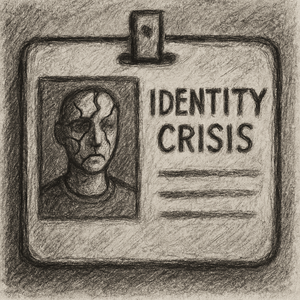The Symphony of Social Change: Orchestrating a State That Serves Lives, Not Silos
Matt Robinson’s recent reflection on the work he is doing with Chris Owen and Toby Eccles of Social Finance on the last decade of UK social investment struck a powerful and familiar chord. He rightly points out a frustrating paradox: while we’ve seen tremendous innovation in models like social outcomes contracts, with many successful pilots proving what works, we have consistently failed to achieve transformation at scale.
The same systemic issues persist. The elderly are stuck in hospitals, children lack foster placements, and the homeless cycle through emergency services. As Matt identifies, the problem isn’t a lack of good ideas. It’s an “orchestration gap”: a failure to bring the essential capabilities of joined-up data, user-shaped design, transition finance, aligned governance, and flexible supply chains to bear on a problem, all at the same time.
His post left me asking a fundamental question: what would such an ‘orchestrator’ actually need to do? And if we were totally unconstrained, a thought experiment in reductio ad absurdum, what would really need to change for them to succeed? The answer, I believe, lies not just in defining the conductor’s role, but in redesigning the entire orchestra pit.
The Conductors Many Batons
The idea of an “orchestrator” is compelling, but it’s not a single job title. Drawing on extensive analysis of orchestrator models from tech, logistics, and social innovation, we see it’s a spectrum of functions. A public service orchestrator would need to wield several different batons, depending on the task at hand:
- The Backbone Organization: Acting as a neutral facilitator, this orchestrator builds trust and community buy-in. It doesn’t command, but rather supports partners to achieve a shared vision, much like the models used in Collective Impact initiatives. Its currency is legitimacy.
- The Systems Integrator: This is the tech wizard, the pragmatic plumber of the state. Its role is to break down data silos and connect the disparate, legacy IT systems across government agencies, making seamless service delivery technically possible.
- The Platform Owner: A more radical model, this orchestrator builds and governs a digital ecosystem where others can innovate. Think of Apple’s App Store: the owner sets the rules and provides the core infrastructure, allowing a thousand flowers to bloom. What might a government platform for “starting a business” or “accessing disability support” look like?
Regardless of the model, every successful orchestrator performs a set of universal functions: they guide vision, align activities, establish shared measurement, set the rules of engagement, and mobilize resources.
But this immediately raises Matt’s crucial question: would this be a welcome conductor or “just another middleman”? This is the orchestrator’s central dilemma. The role fails the moment it devolves into a value-extracting gatekeeper, a bureaucratic bottleneck that consumes resources without delivering change. To succeed, an orchestrator must be relentlessly focused on value creation, armed with a clear mandate, perceived neutrality, and unimpeachable technical competence.
Re-architecting the State Around Life
Here’s the absurd leap. Even the world’s greatest conductor cannot make beautiful music if the violins are in a different building from the cellos and the percussion is locked in a cupboard. An orchestrator for public services will inevitably fail if the very architecture of the state is designed to prevent harmony.
The fundamental problem is that the UK state is organised around its own internal capabilities (a department for work, one for health, one for justice), but citizens experience life as a sequence of events (having a child, dealing with a bereavement, moving home). This forces the citizen to become their own, exhausted orchestrator, navigating dozens of services across multiple agencies just to complete a single life task.
So, what if we rebuilt the state not around departmental silos, but around the citizen’s journey? This is the concept of Life-Event Government. This isn’t a far-fetched fantasy; it’s the direction of travel for the world’s leading digital governments. They are already proving that it’s possible to reorient the state around the citizen:
- Singapore’s ‘Moments of Life’ (now LifeSG) platform consolidates services around key life events. For the birth of a child, parents use a single digital service to register the birth, apply for a cash bonus, and enrol the child in the national library, a process that previously required navigating multiple agencies.
- Denmark’s national portal, Borger.dk (meaning “citizen dk”), is explicitly structured around life-event guides for everything from moving home to losing a job, all underpinned by a universal digital ID used across public and private sectors.
- Estonia has taken this to its logical conclusion, creating a proactive, ‘invisible’ state built on its pioneering X-Road platform. This isn’t a giant central database, but a secure digital motorway that allows all of the nation’s separate public and private databases to communicate. This simple but powerful idea enables their “once-only” principle (meaning government can’t ask for data it already holds), allowing the state to use data from one event to anticipate the next. Upon a child’s birth, for instance, benefits are automatically calculated and offered without the parents even needing to apply.
- Australia and New Zealand are following suit. Australia is restructuring its central myGov portal around life events, and New Zealand’s Digital Public Service strategy explicitly prioritises the acceleration of “life event and customer journey products” to create a unified public service.
These pioneers show what’s possible when the state is willing to transcend its own internal boundaries. Imagine, for a moment, if the UK followed suit, with a state re-architected from the ground up:
- New Governance: Instead of a Secretary of State for Health, imagine a Minister for Starting a Family, a Minister for Career Transitions, or a Minister for Later Life and Bereavement. These would be empowered mission-leaders with the authority to coordinate action across the traditional domains of health, welfare, and education. Their job would be orchestration.
- New Funding: The Treasury’s Spending Review would be transformed. Rather than departments bidding against each other, funding would flow into pooled, mission-driven budgets. The “Starting a Family” mission would receive a single pot of money for everything from maternity services and parental benefits to early-years provision. This would finally create a powerful incentive for preventative spending, as the mission leader would be accountable for the total outcome and the total cost.
- New Delivery: Citizens would be served by permanent, multi-disciplinary Life Event Teams. A “Bereavement Support Service” would be a single point of contact responsible for everything from registering the death and stopping pension payments to providing probate guidance and grief counselling. No more handoffs, no more repeating your story.
- New Infrastructure: This is all impossible without a non-negotiable technical foundation: a universal digital identity and a legally mandated data-sharing layer (a UK “X-Road”) built on a “once-only” principle, so government can never ask you for information it already has.
The Conductor and the New Orchestra
This radical vision connects directly back to our orchestrator. In a Life-Event Government, the orchestrator’s role becomes clear: they are the mission leader for a specific life journey. The Minister for Later Life and Bereavement would orchestrate their pooled budget and multi-agency team. They would act as a Backbone Organization to align charities and community groups, while deploying the skills of a Systems Integrator to ensure the digital services are seamless. This answers Matt’s final question: orchestration must be about both finance and wider support. The orchestrator is given control of the finances so that they can coordinate the holistic support network.
Of course, a wholesale re-architecting of the state is a radical proposal, not a short-term plan. But this exercise in reductio ad absurdum isn’t an academic flight of fancy; it’s a vital diagnostic tool. By sketching out what a truly citizen-centric and ‘orchestratable’ system could look like, we get a clearer sense of the direction of travel. This vision provides a North Star for the difficult, practical work that Matt’s article calls for. It helps us ask better questions within our current, fragmented reality: how can we push for pooled budgets, even on a small scale? How can we build services that feel more like integrated ‘Life Event Teams’?
Ultimately, the search for an ‘orchestrator’ is the critical first step. Understanding the kind of orchestra we should be building is what will help that conductor make the most of the instruments they have today, and slowly, piece by piece, help us build a state that is more in tune with the lives its citizens actually lead.

